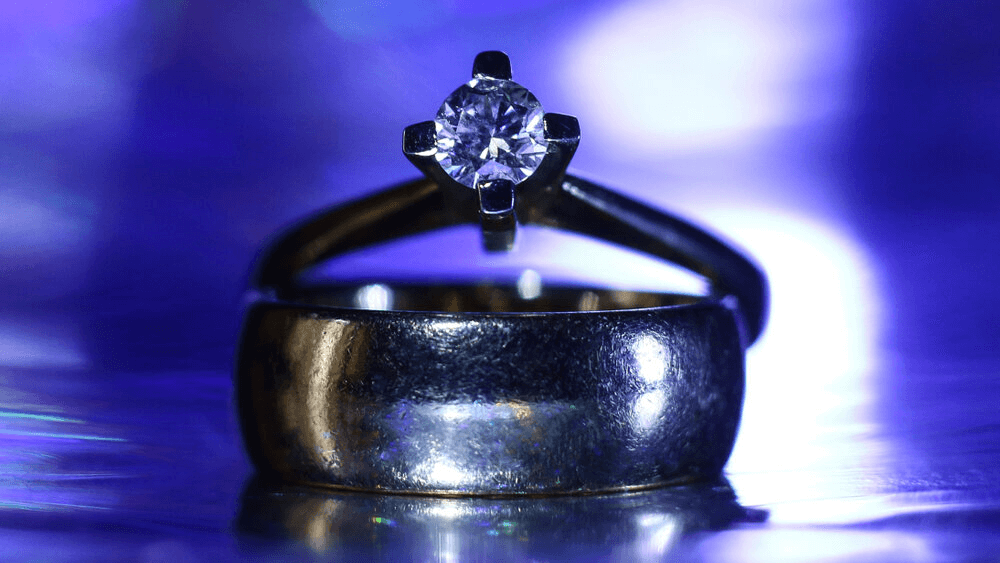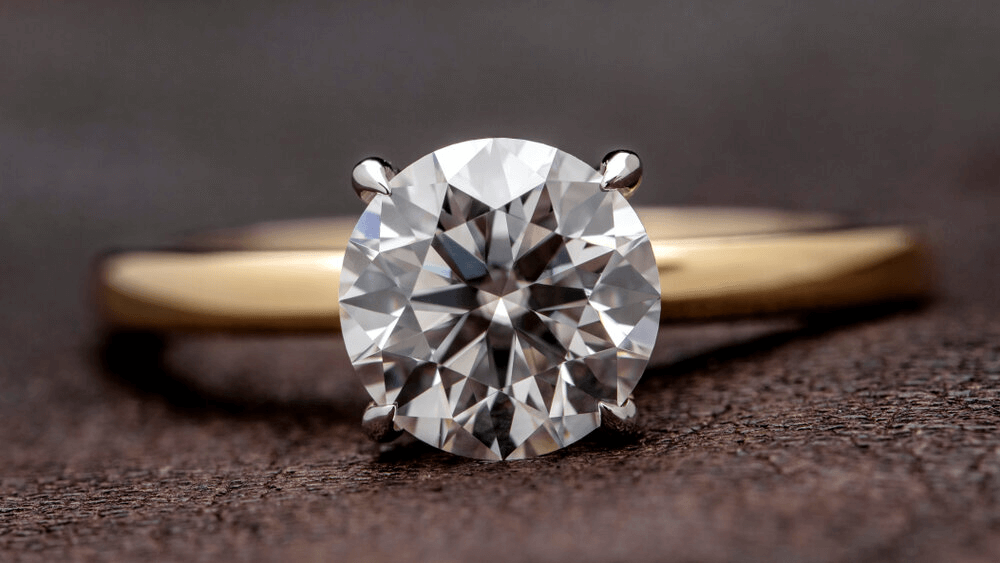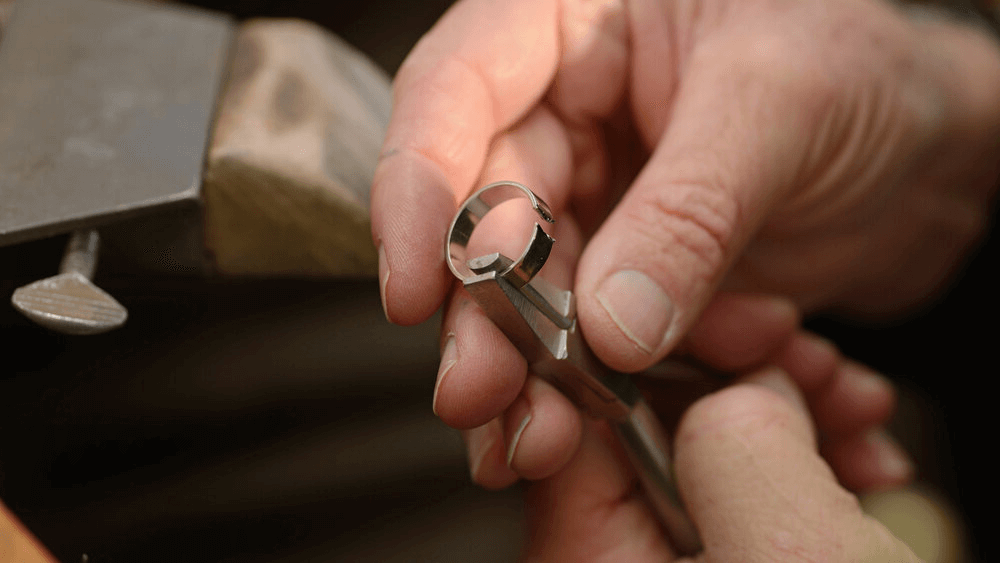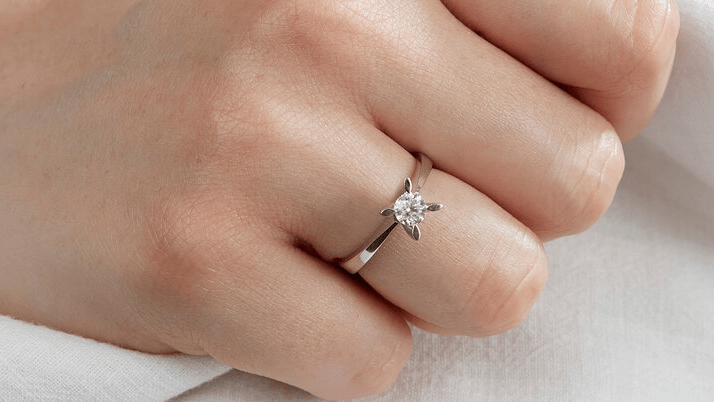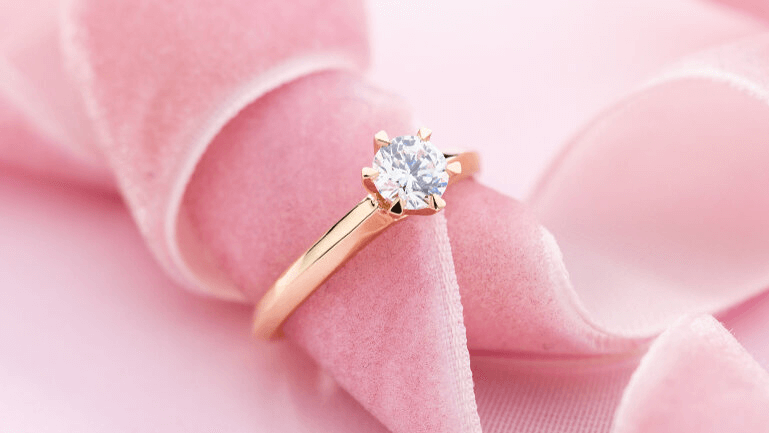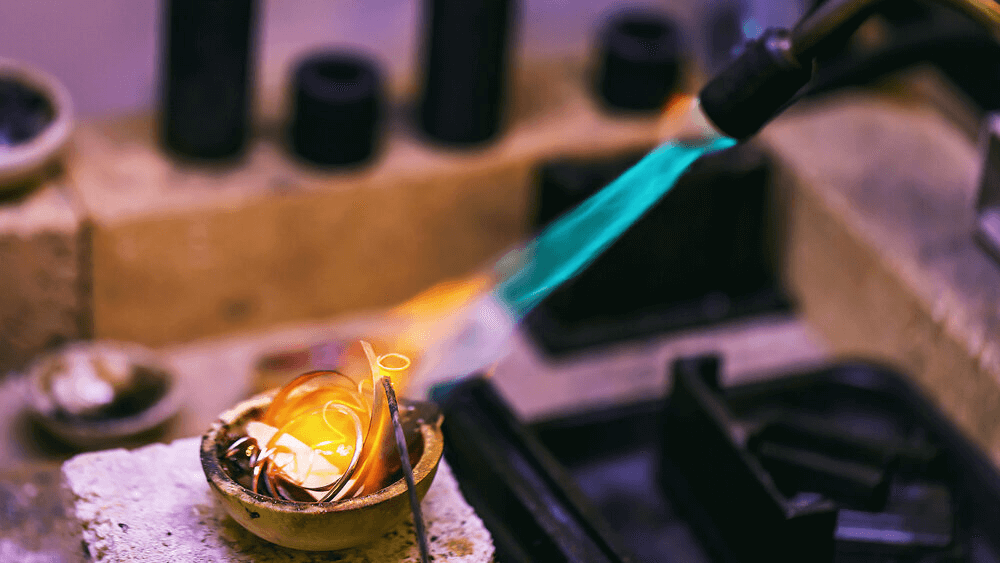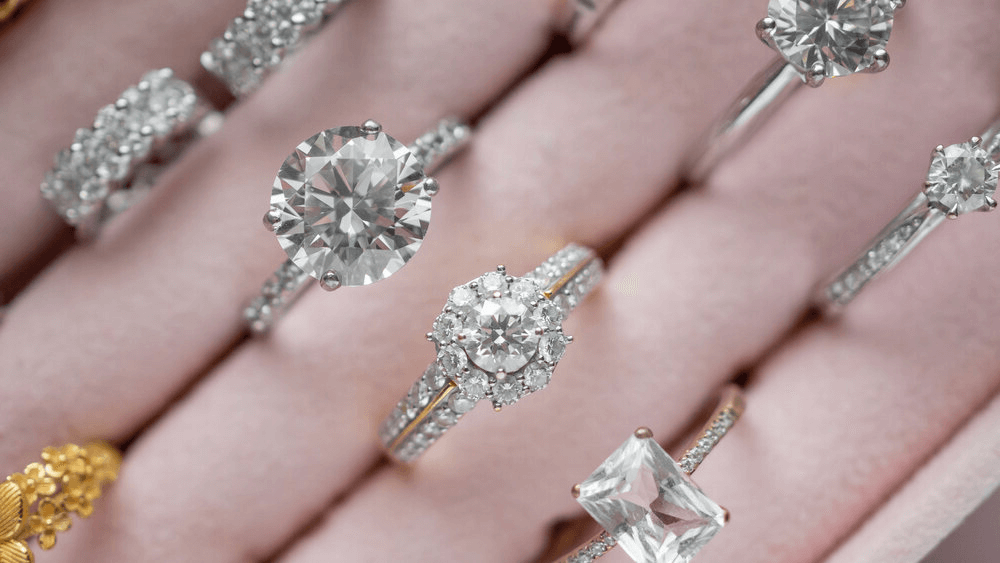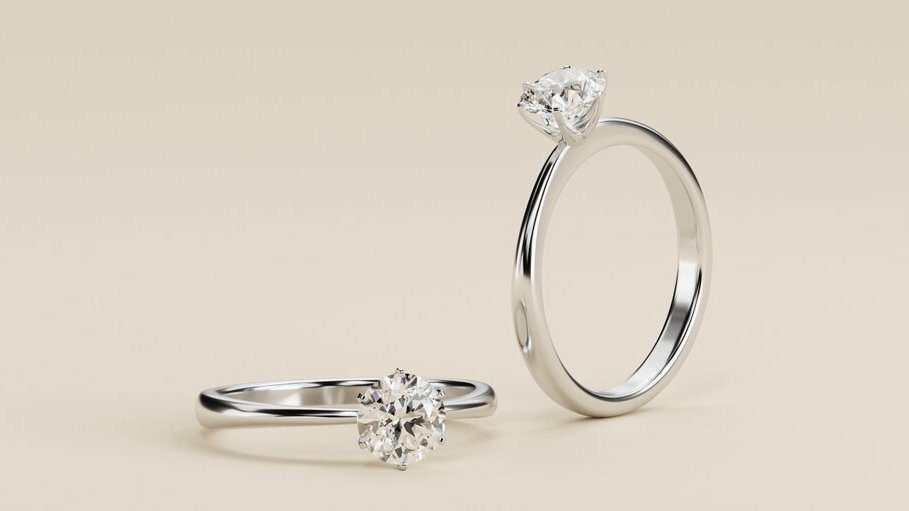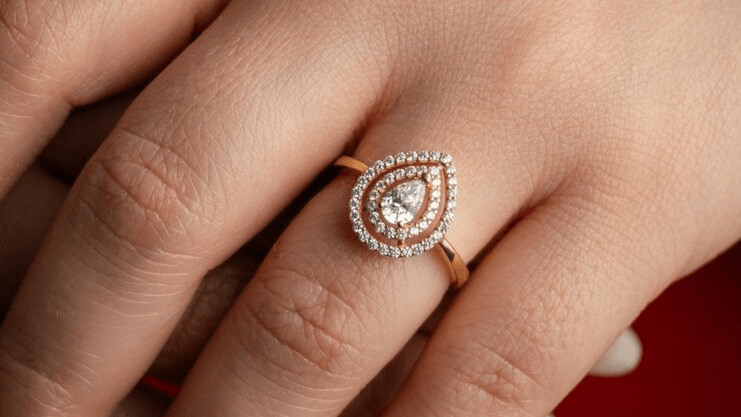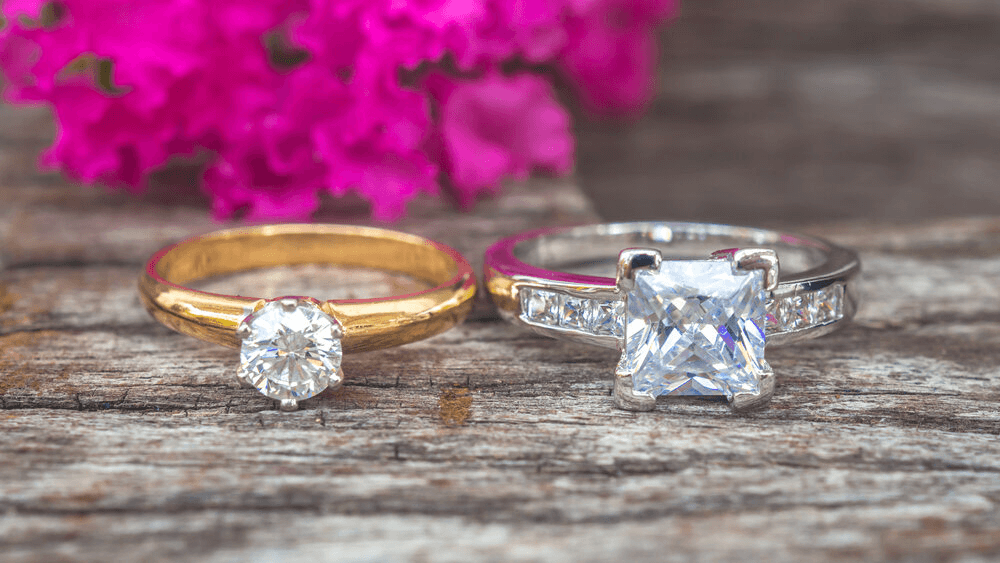14K vs 18K: The Ultimate Gold Engagement Ring Showdown

By Gary A.

Edited by Olivia H.
Published Nov 14, 2021
Edited on Mar 31, 2025
For anyone choosing between 14K or 18K gold, understanding how each impacts the look, durability, and value of your engagement ring is key to making the perfect decision.

- 14k vs 18k Gold: Six Quick Tips for Selecting the Perfect Diamond Engagement Ring
- Introduction
- Composition and Purity: Understanding the Difference Between 14K and 18K Gold
- Appearance: The Visual Splendor of Gold: 14K vs 18K
- Durability and Everyday Wear
- Price Considerations: Affordability vs Luxury
- Our Expert Take
- 10 FAQs
Before we dive deeper into the specifics, here are some practical tips to help guide your decision-making process:
14k vs 18k Gold: Six Quick Tips for Selecting the Perfect Diamond Engagement Ring
When choosing a diamond engagement ring, understanding the difference between 14k and 18k gold is crucial. Here are practical tips to guide your decision:
- Tip 1: Assess Your Lifestyle Active Lifestyles: If you or your partner lead an active lifestyle, 14k gold might be the ideal choice. Its durability makes it less prone to scratches and dents, which is essential for those who engage in physical activities or work with their hands. Leisure Oriented: For those who prioritize luxury and have a less physically demanding lifestyle, 18k gold, with its higher gold content and richer color, can be a splendid choice.
- Tip 2: Consider Long-Term Maintenance 14k Gold Maintenance: While more durable, 14k gold can tarnish over time due to its higher alloy content. Regular cleaning and occasional polishing will maintain its luster. 18k Gold Care: This softer metal requires more delicate care. Be prepared for more frequent professional cleanings to preserve its bright, rich appearance.
- Tip 3: Analyze Color Preferences Color Depth: 18k gold typically displays a deeper, more vibrant yellow hue due to its higher gold content. It’s ideal for those who prefer a more pronounced gold color. Subtle Elegance: If a subtler gold appearance suits your taste better, 14k gold offers a slightly paler color but still retains the classic gold look.
- Tip 4: Understand Price Implications Budget Considerations: 14k gold is generally more affordable than 18k gold. If budget constraints are a consideration, 14k gold offers a balance between quality and cost-effectiveness. Investment Value: For those viewing their engagement ring also as an investment, 18k gold has a higher intrinsic value due to its purity.
- Tip 5: Weigh Durability Against Purity Prioritize Durability: If the ring’s longevity and resistance to wear and tear are your top priorities, 14k gold is the better option. Opt for Purity: For those who value the purity of the metal and the prestige associated with it, 18k gold’s higher gold content makes it a more suitable choice.
- Tip 5: Consider Hypoallergenic Properties Allergy Considerations: If skin sensitivity is a concern, 18k gold’s higher purity typically offers more hypoallergenic properties, making it a safer choice for those with metal allergies.
- Tip 6: Think About Resale Value Resale Aspects: While not the most pleasant aspect to consider, the higher purity of 18k gold can result in a better resale value compared to 14k gold. However, remember that the overall value also depends on the craftsmanship and the diamond’s quality.
Now that you’ve got these practical tips, use Jeweler AI below to find the perfect engagement ring that suits your style and budget:
Introduction
The two most popular options for gold engagement rings and wedding bands are 14 karat and 18 karat gold, with the first being the slightly more common choice.
The difference will impact the cost, durability, and appearance of your ring – although, before you get to really grasp the differences between 18k and 14k, it can be difficult to spot any noticeable variances between the two.
But, for any shopper, understanding the importance of karat weight means developing a pretty keen eye – and a definitive preference for one or the other.
Here’s what you need to know.
Composition and Purity: Understanding the Difference Between 14K and 18K Gold
Put simply, the difference between a 14 karat gold ring and an 18 karat gold ring lies in the amount of gold used to create each of those rings. An 18k gold ring contains more gold than a 14k gold ring of the same size – and even weight.
You can read our guide to gold engagement rings for a full explainer on what a ‘karat’ really is but, for now, it’s important to understand that in any item of gold jewelry, the gold content is ‘broken down’ into 24 parts.
Solid or ‘pure’ gold is 24 parts – referred to, of course, as 24 karats. It is too weak and soft to be used in jewelry, and that’s why most gold jewelry features at least some alloy ‘mixed into’ the gold.
18k gold contains 18 parts gold to 6 parts alloy, making it 75% gold; 14k gold, on the other hand, contains 14 parts gold to 10 parts alloy, meaning any piece of 14k gold jewelry features a gold content of just over 58% gold.
So, 18k gold features more gold. This is the only difference between the two options.
Appearance: The Visual Splendor of Gold: 14K vs 18K
Unless you’ve looked closely at an array of gold jewelry, it probably all looks pretty much the same in your head: distinctively yellow, lustrous, and bright. Most people don’t picture pure, 24 karat gold when they think of this precious metal, since it’s a pretty uncommon sight. Still, there’s a major difference between every other karat type, so how can you tell them apart?
Color Differences Between 18k and 18k Gold
While jewelers may find it a little easier, even first-time shoppers will find that the differences in appearance between a 14k and 18k ring will be pretty easy to spot.
Why? Because no other metal looks quite like gold – and particularly not the common alloys used to strengthen it. This means that the process of alloying it will inevitably ‘take away’ some of the original vividity and deep, orange-yellow hue of pure gold.
Yellow gold becomes more muted as you get further from 24k. 9 karats is generally seen as the lowest option for fine jewelry, and appears a lot more subdued than pure gold.
Don’t get us wrong – the difference isn’t going to be night and day. It’s not like 14 karat gold is washed-out and bland, while 18k gold still perfectly captures the vibrancy and richness of pure gold.
The difference is subtle, but unmistakably there. 18k gold features a deeper gold hue; a warm, luxuriant yellow that contrasts beautifully with a clear diamond, while 14k gold features a softer hue that, while still clearly gold, sits more naturally against the skin.
Don’t confuse the brightness of color with shine or luster. 14 karat gold, if properly cared for, will offer a glossy sheen on a par with 18 karat gold – just as a 10 karat gold will shine brightly, despite the fact that its color is significantly weaker than that of a 14 karat or 18 karat gold.
Differences in Shine
18k gold boasts a brighter, more vivid color, but it is not shinier than 14k gold.
Gold’s beautiful and expensive-looking sheen is not limited to pieces that feature the highest levels of gold possible. Even 9k gold is highly lustrous, and will appear so for many, many years provided it is cared for.
In fact, 18k gold’s vulnerability to scratches can mean that it appears duller after many years’ worth of wear than 14k gold – but more on that below.
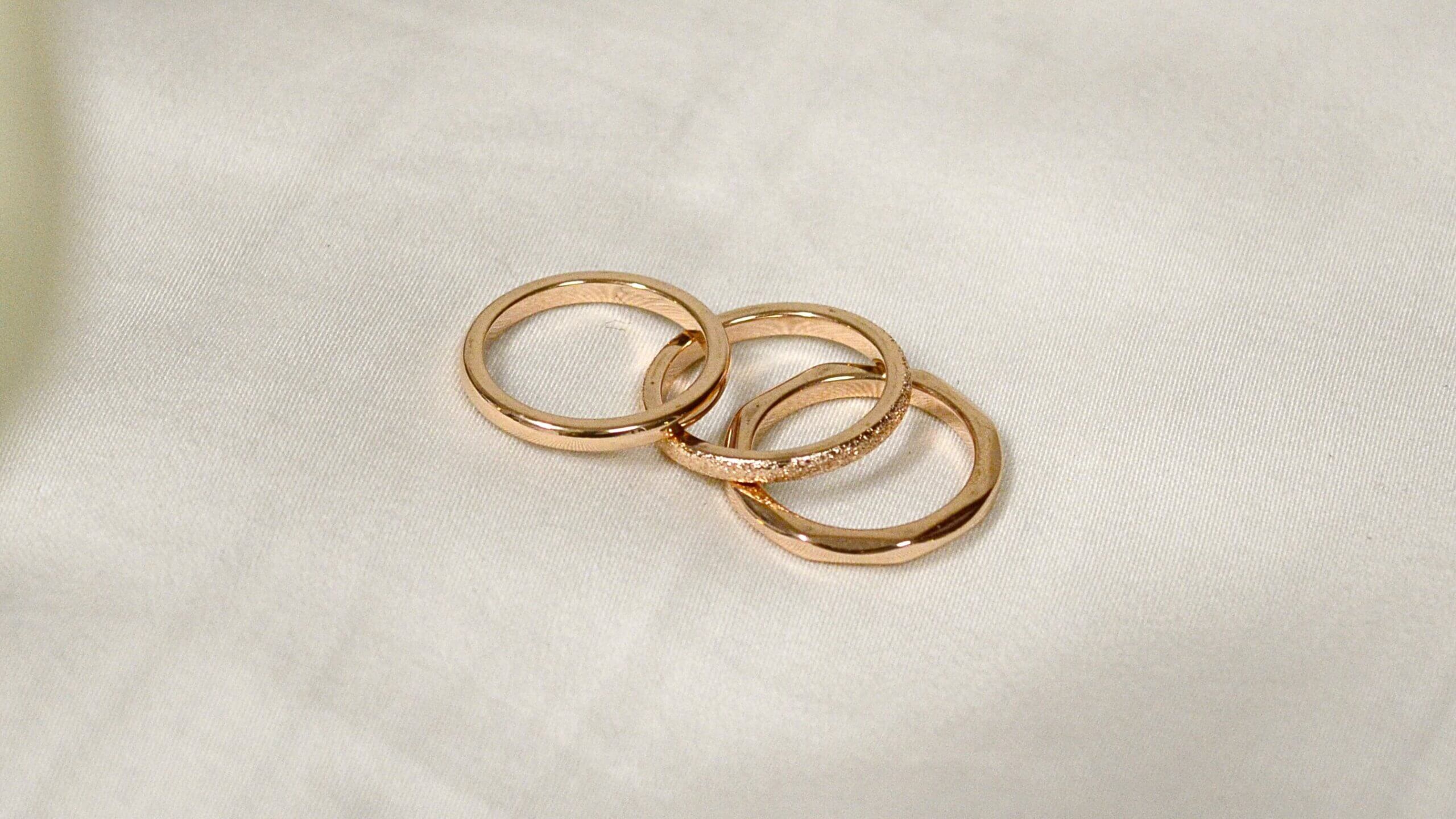
Durability and Everyday Wear
By now, you’ll know that most gold jewelry is alloyed in order to make it capable of withstanding years’ worth of wear and tear without warping or showing significant signs of damage. The extent to which gold is alloyed will determine its durability, so how do 14k gold and 18k gold stack up against one another in this department?
Comparing the Strength of 14k and 19k Gold
The higher quantity of alloy used to create 14k gold makes it substantially tougher than 18k gold.
This means that, over the years, you are likely to notice far fewer scratches and marks on a 14k gold ring than you are on an 18k gold ring.
Still, 18k gold is considered by most jewelers to be strong enough for bridal jewelry. It’s not a good idea to wear 18k gold all the time if you work a physically demanding job or a busy life all-round, but it’s nowhere near as vulnerable to damage as pure gold, or 22k gold – which is also considered a poor choice for jewelry that will be worn as much as engagement rings and wedding bands.
In other words, if you’re looking for the goldest gold possible but need it to be able to withstand years’ worth of knocks and scrapes, go for 18k gold and accept that it might start to show its age someday – something that many wearers consider to be an endearing quality, rather than a disappointment.
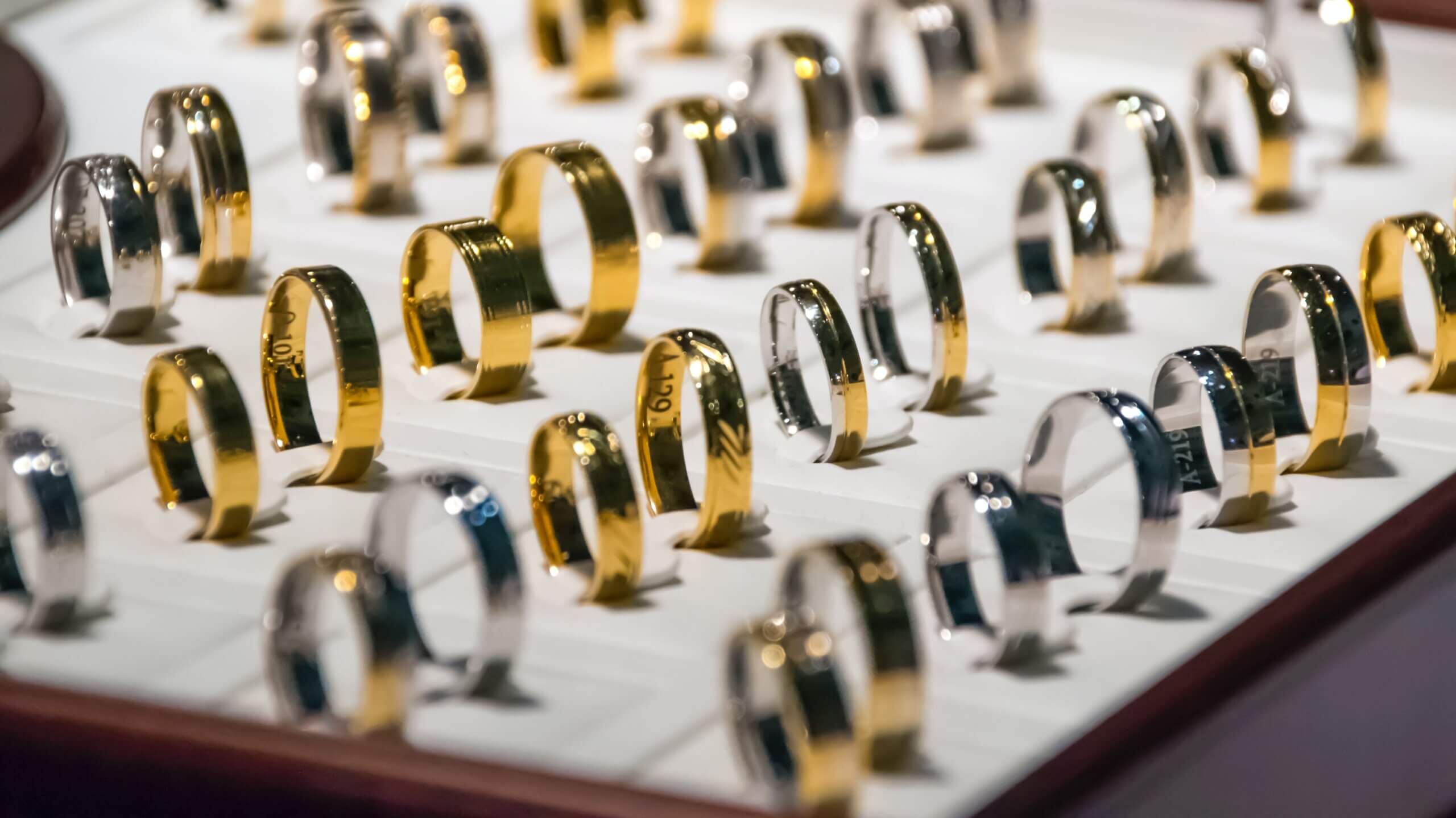
Price Considerations: Affordability vs Luxury
Having a preference for one or the other is only one side of the story and, as with any aspect of creating an engagement ring, it always comes back to cost in the end.
Cost Differences Between Gold Types
18 karat gold is much more valuable than 14 karat gold, simply because of the fact that it contains a much higher level of gold.
14k gold’s popularity is proof of the fact that purity is not a pivotal feature in gold jewelry, but it is still significant to its overall value. The higher level of gold in 18k jewelry inevitably leads to a much higher value, just as 14k jewelry is much more valuable than similar pieces made from 9k gold.
It’s not uncommon for an 18k engagement ring setting – even a simple solitaire – to be twice as expensive as a 14k ring that is pretty much identical in every respect except strength and intensity of color. This is often down to the fact that shoppers are willing to pay a premium for the prestige of a higher purity level, but personal preference doesn’t always have to lie with the purest choice.
Our Expert Take
Some people adore the rich, bright hue of 18k gold. It carries echoes of that distinctive orange-yellow found in pure gold, but toned down just enough to look at home against the skin. It creates a striking contrast against clear diamonds and an attractive ‘reflection’ of gold through the center of the stone.
Others genuinely prefer the more muted look of 14k gold. It manages to keep the warmth and extravagance of gold intact but soften it to a level that many find more in keeping for jewelry that will be worn continuously, for many years to come. It is still capable of creating a beautiful contrast against diamond, but also to look more natural against paler and darker skin tones alike.
It is also stronger and more affordable – two factors that tend to help tip those on the fence in favor of 14k gold.
Still, don’t let the popularity of 14k gold make you feel as though an 18k gold ring is a waste of money. The romantic attachment we feel toward gold jewelry is a pretty powerful reason in and of itself for you to spend extra on 18k if you feel yourself leaning towards it.
10 FAQs
- Q: What is the main difference between 14k and 18k gold?
- A: The key difference lies in the gold content. 14k gold contains 58.3% gold and 41.7% alloy metals, while 18k gold has 75% gold and 25% alloy metals. This difference affects durability, color, price, and hypoallergenic properties.
- Q: Is 14k gold more durable than 18k gold?
- A: Yes, 14k gold is more durable due to its higher alloy content. It’s less prone to scratching and deformation, making it suitable for everyday wear and active lifestyles.
- Q: Does 18k gold have a deeper color than 14k gold?
- A: Yes, 18k gold typically has a richer and more vibrant yellow hue compared to 14k gold, due to its higher gold content.
- Q: Which is more suitable for sensitive skin, 14k or 18k gold?
- A: 18k gold is generally more suitable for sensitive skin as it has fewer alloy metals, reducing the likelihood of skin irritation or allergic reactions.
- Q: Is there a significant price difference between 14k and 18k gold?
- A: Yes, 18k gold is usually more expensive than 14k gold due to its higher purity and gold content.
- Q: Can 14k gold tarnish over time?
- A: Yes, 14k gold can tarnish slightly over time due to its alloy composition, but regular cleaning can maintain its luster.
- Q: Should I choose 14k or 18k gold for an engagement ring?
- A: It depends on your lifestyle, budget, and aesthetic preference. If durability and cost are major factors, go for 14k gold. If you prefer higher purity and richer color, choose 18k gold.
- Q: Are there hypoallergenic concerns with 14k gold?
- A: 14k gold can sometimes cause allergic reactions due to its alloy content, particularly if it contains nickel. 18k gold, with fewer alloys, is typically more hypoallergenic.
- Q: Will 18k gold scratch easily?
- A: Yes, 18k gold is softer and more prone to scratching compared to 14k gold. It requires more careful handling and maintenance.
- Q: Is 14k or 18k gold better for resale value?
- Answer: 18k gold generally has a higher resale value due to its higher purity, but the overall resale value also depends on the craftsmanship and condition of the jewelry.
Find your perfect match with Jeweler AI – where 14k meets 18k gold in elegance and style!
FOLLOW-UP GUIDE SERIES

